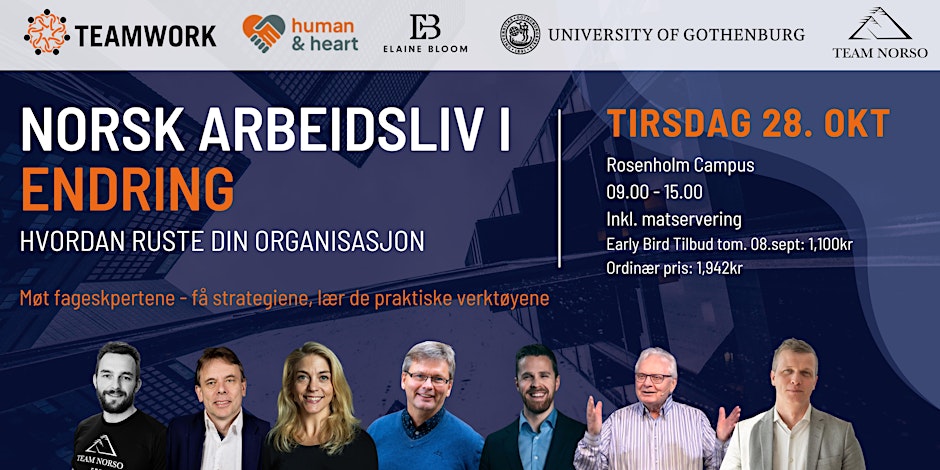mandag 10. februar 2025
Employeeship - And the Scandinavian Leadership Model
mandag 10. februar 2025
In the heart of the Nordic societies lies a unique blend of trust, equality, and innovation, shaping systems that promote social welfare and sustainability. The cultural ethos of the Nordic countries has shaped our organizational practices, specifically through the Employeeship concept and the Scandinavian Leadership model. Instead of focusing on a hierarchical peak, the Scandinavian model utilizes post-heroic leadership to leverage the competence and will of all employees. The model may be challenging both for leaders and employees.
Unique Qualities in the Nordic Societies
Nordic societies are distinguished by their strong social cohesion, egalitarian values, and high levels of trust. This environment fosters a unique approach to governance and business management where transparency and consensus are highly valued. The societal trust in institutions and among individuals creates a supportive framework for collaborative approaches and innovative practices in the workplace. Such characteristics are conducive to models like employeeship and trust-based leadership, where the focus is on empowering individuals and relying on their intrinsic motivations rather than hierarchical control.
The Employeeship Concept, Based on Horizontal Relations
The concept of employeeship in the Nordic context emphasizes horizontal relations rather than traditional hierarchical structures. This approach is built on mutual respect and trust between all levels of an organization, encouraging employees to take greater responsibility for their work and to engage more deeply with the organization's goals. Employees are seen as partners in the work process, which enhances their commitment and loyalty. This model leverages the intrinsic motivation of employees, leading to increased innovation and productivity, as individuals feel more personally invested in the outcomes of their work.
The Scandinavian Leadership Model
The Scandinavian leadership model is characterized by a participatory style, where leaders act more as facilitators than commanders. This model is highly democratic, with a focus on collective decision-making and broad consultation across the organization. Leaders in this model are expected to be approachable, empathetic, and supportive, fostering an open environment where ideas can flourish. This approach not only enhances the motivation of employees but also helps in building a resilient organization where diverse ideas and perspectives are integrated into decision-making processes.
Benefits for the Employees and the Organisation
Adopting the Scandinavian model of leadership and employeeship brings numerous benefits to both employees and the organization. For employees, there is an increase in job satisfaction, work-life balance, and personal development opportunities. For the organization, the benefits include higher levels of employee engagement, lower turnover rates, and enhanced reputation. Moreover, this approach leads to greater innovation and adaptability, as employees are more likely to contribute creatively when they feel valued and respected.
Challenges to Be Handled
While the Scandinavian model offers many benefits, it also comes with challenges that need careful handling. One of the primary challenges is maintaining the balance between consensus and decisiveness. Excessive consensus-seeking can lead to delays in decision-making and may hinder swift action when needed. Additionally, this model requires a high level of mutual trust and communication, which can be difficult to sustain in larger or more diverse organizations. Leaders must be adept at conflict resolution and must work continuously to foster an environment of trust and open communication.
Challenges for non-Nordic employees
Employees with a different cultural background may face several challenges when adapting to the horizontal organizational ideals prevalent in Nordic societies. One of the main hurdles is the cultural difference in communication styles and decision-making processes. In many cultures, hierarchical structures are deeply ingrained, and authority is rarely questioned, which contrasts sharply with the Nordic emphasis on egalitarianism and consensus. Non-Nordic employees might struggle with the expectation to voice opinions freely or challenge ideas presented by those in leadership positions.
Furthermore, the informal nature of communication and the low power distance in Nordic workplaces might be confusing to those used to more formal interactions and clear delineations of power. This can lead to misunderstandings and a feeling of ambiguity about one's role and the expectations that come with it. The concept of self-management and self-motivation under the employeeship model may also be unfamiliar and daunting to those who are accustomed to more directive leadership styles, leading to potential underperformance or dissatisfaction.
Adapting to the extensive collaborative processes can also be challenging for those who are used to more individualistic approaches. The need for broad consensus before moving forward with decisions can be perceived as inefficiency, particularly for those who value speed and autonomy in their work. Consequently, the adjustment process for non-Nordic employees involves not only learning new workplace norms but also unlearning deeply held values and practices from their own cultures, which requires time, patience, and support from the organization to facilitate a smooth transition.
Artikel sist oppdatert mandag 10. februar 2025
